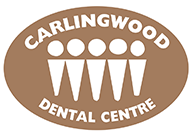When you go to the dentist, you will hear many terms that you may not be familiar with. Bruxism, calculus, periodontitis, tartar – sure, you have probably heard these terms on TV in toothpaste commercials, but do you know what they mean? Gingivitis is likely one of those terms. You know it’s bad, but do you know what it is? Let’s explore what gingivitis is, how it is treated, and how it can be prevented.
What is Gingivitis?
In the simplest terms, gingivitis is inflammation of the gums. Gingivitis will make your gums swollen and red, and is often accompanied by light bleeding. This bleeding is especially noticeable when brushing or flossing. Inflammation is caused by a buildup of plaque and bacteria, a sign of poor dental habits. Fortunately, gingivitis can be avoided fairly easy with simple dental hygiene steps and the symptoms can also be reversed fairly quickly. However if you do not take care of your mouth, gingivitis can lead to more serious symptoms down the road.
How Can You Treat Gingivitis?
Gingivitis is easy to treat as long as you catch it in the early stages, before it progresses to gum disease. Brush your teeth twice daily with a soft-bristled toothbrush and CDA-approved toothpaste. Brush your teeth, cheeks, and tongue. Ask your dentist about whether a gingivitis control toothpaste is necessary. Floss daily, making sure to not to neglect the back molars. Use mouthwash daily. Continue this routine every single day going forward. Combined with regular cleanings by your dental care team, you can reverse the symptoms of gingivitis and have a healthy mouth once more.
If you don’t take notice or pay attention, then the plaque building up could soon harden and form a layer of tartar. This can’t be dealt with in the comfort of your own house and you will need to see a professional about it. If you want to avoid gum diseases and other oral problems then make a dentist’s appointment soon because tartar could become a big problem if not dealt with in the right time.
Obviously, no disease is small or encouraged. The preventions that you need to take include maintaining utmost oral hygiene (brushing, flossing and mouthwash) and seeing a dentist once a year if not twice. If you notice blood while brushing which will not go away, then it is advisable to see a dentist. They can examine your mouth and give you the treatment you need to reverse gingivitis and stop it in its tracks before it progresses to gum disease.
Get in touch to book your next appointment at Carlingwood Dental Centre, conveniently located on Carling Avenue in Ottawa. In addition to regular dental care, we perform extractions, restorations, cosmetic dentistry procedures, Invisalign, implants, and much more.


